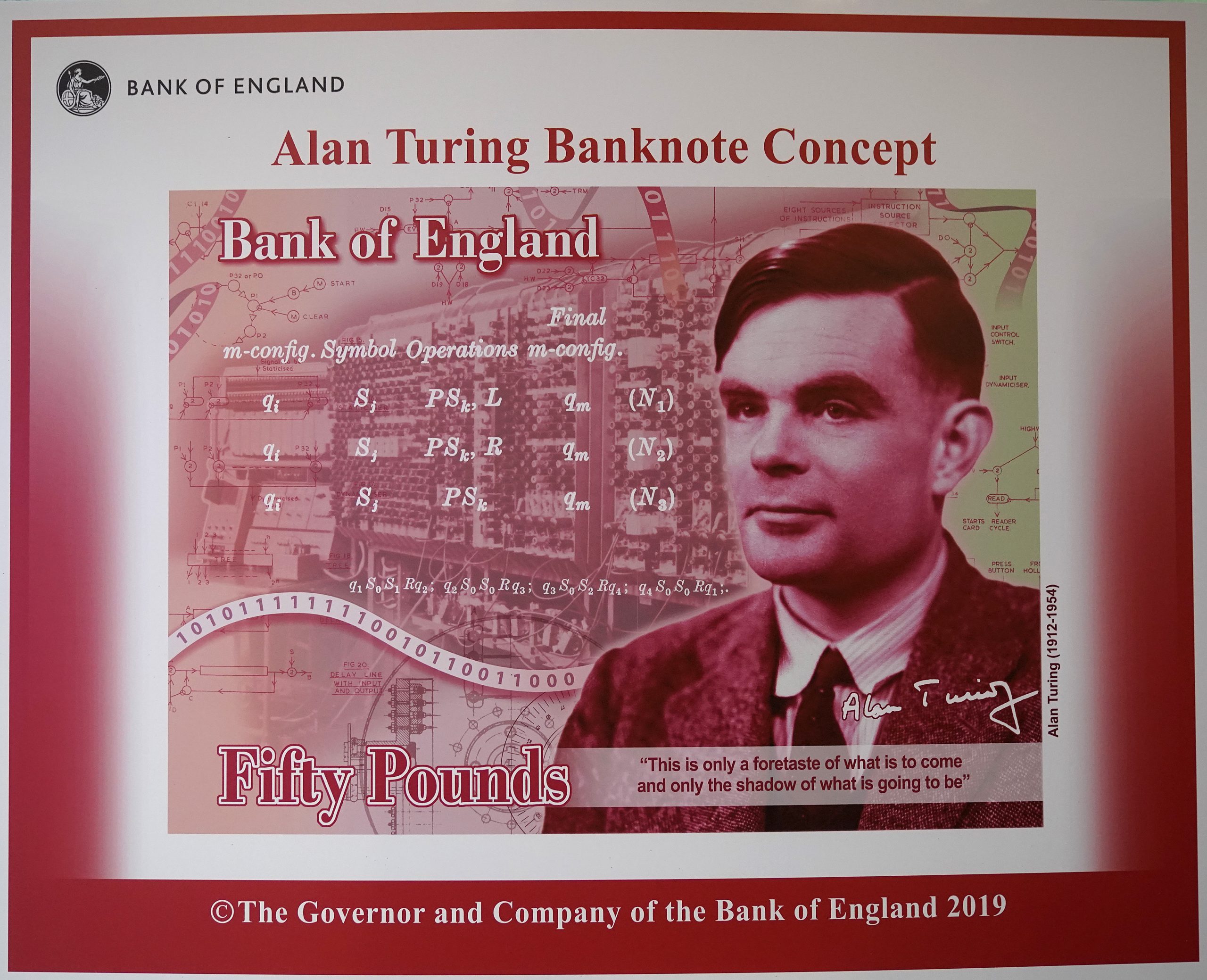
There is good reason to choose Alan Turing to take us further into the 21st century: his role in breaking the Nazi Enigma codes will play a central role in his depiction on the new banknote. But this is by no means a full reflection of his interests and achievements.
Yes, he helped the Allies win the war: Turing saw a problem that needed solving, and applied his unique mind to the task, harnessing all its vast capacity for insight and creativity. But his significance isn’t just that of his historical position as a wartime problem-solver and a heinously mistreated homosexual man. His scientific gift to the world is still being unwrapped.
Turing was a notoriously private person. However, we have a few insights into his prime motivations, via the pioneer of the information age, Claude Shannon. An American mathematician who worked in the fertile, multifaceted environment of Bell Labs in New Jersey, Shannon was Turing’s intellectual equal. The two recognised their strange kinship in 1942, when Turing was sent on a visit to Bell Labs to learn more about US encryption efforts.
During the visit, Shannon and Turing would take afternoon tea together and talk about anything but encryption. Shannon later commented that Turing envied his freedom to roam over all kinds of intellectual territory, but the pair conversed most about what computers might do in the future — especially the creation of artificial intelligence. “Turing and I used to talk about the possibility of simulating entirely the human brain,” Shannon told an interviewer in 1977. At the time, they thought the project might take a couple of decades.
Turing wrote “Intelligent Machinery”, his first paper about simulating the brain on a computer, in 1948. It wasn’t published until years after his death, largely because Turing’s boss, Charles Darwin — grandson of his more famous namesake — thought it no better than a “schoolboy’s essay”. In 1950, Turing published another work on AI: a paper that asked “Can Machines Think?” Shannon visited Turing in Manchester that year, and was impressed to see that Turing was still working on understanding what went on inside computers. He had even devised a system where the Manchester computer would emit a sound every time it completed an operation, with the tone of the hoot giving information about the process. Turing thought that this programming command, to “put a tone to the hooter!”, as he joyfully expressed it to Shannon, could be the key to understanding how machines might think.
It wasn’t — that insight came with Turing’s architecture for a different computer, which connected up its circuits with modifiable connections, mimicking the architecture of the human brain. The artificial neural network was only brought off the drawing board — at MIT in Boston, where Claude Shannon was a visiting professor — in 1958, four years after Turing died in such painful circumstances.
We could celebrate Turing for his codebreaking, or focus on the appalling treatment of this genius received as a homosexual man in an era of intolerance. But perhaps the choice of Alan Turing for our £50 note is best seen as a nod towards the emerging era of artificial intelligence. Turing told the Times in 1949 that current incarnations of computing machines were “only a foretaste of what is to come, and only the shadow of what is going to be.” This is the quote that will appear on the £50 note, and it remains true — for good or ill. Following Turing’s lead, we are now developing machines that learn to diagnose disease earlier than a human can manage, alongside others that learn to identify and kill human targets. AI will change the world through experiences of joy and pain, much like its creator.






